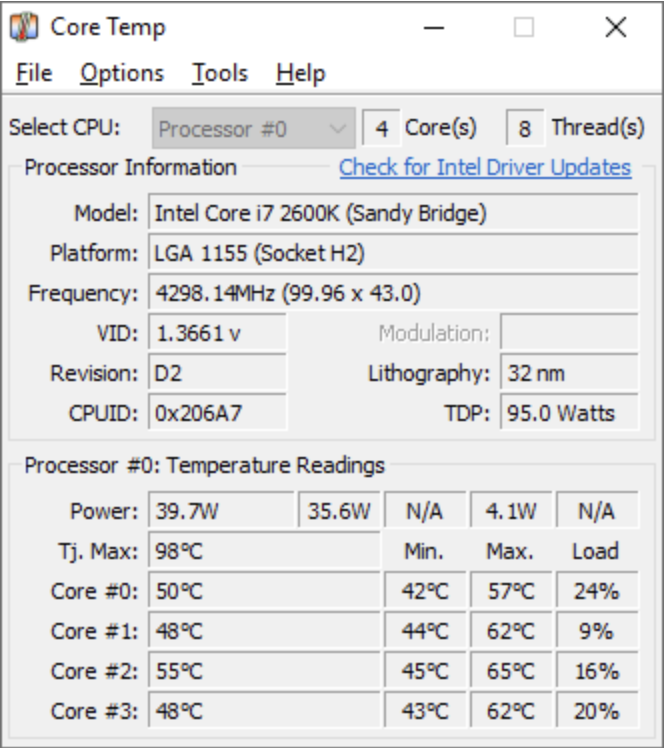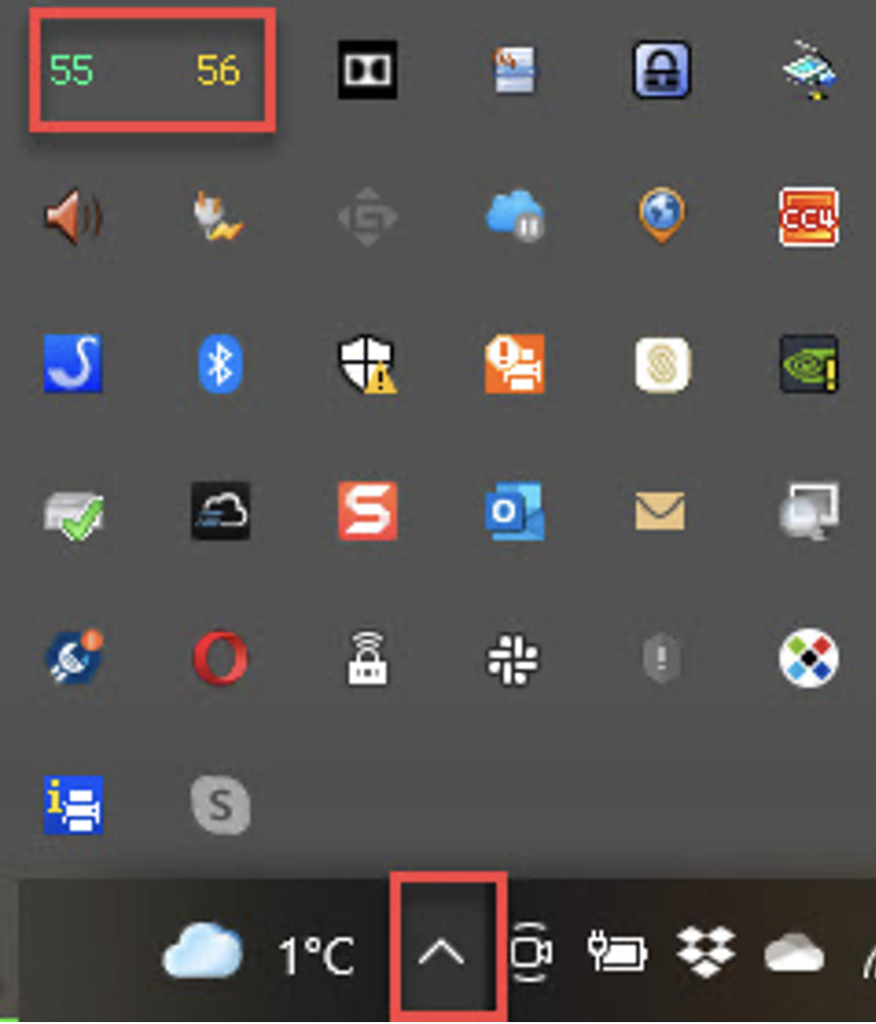Just like your heart, the CPU (central processing unit) is the heart of your computer. The CPU handles all kinds of calculations needed to run computer apps and games. The more complex the app or game is, the hotter it gets inside your computer — causing your CPU to literally sweat buckets. Just like hypertension is dangerous for us humans, constant overheating of your CPU is harmful to your computer in the long term. So, it’s important to keep an eye on the CPU temperature and check it regularly. Read on to discover how to keep your CPU’s temperature under control so that you can keep on enjoying your computer.
What’s the ideal CPU temperature?
During a normal workload, your CPU’s normal temperature is between 40–65°C (104–149°F) — the perfect temperature where your CPU is neither over- nor under-utilized. The type of CPU installed on your computer is one of the factors that influences the CPU’s temperature: The more powerful the CPU, the better it can handle demanding applications. If you’ve got an ultrabook, which is by its very nature very compact, there’s hardly any space in which to fit a powerful CPU compared to a 17” notebook or tower. Another factor that influences the CPU temperature is how much the computer is being utilized. If you’ve got a load of apps running simultaneously on your computer, your CPU’s temperature will increase. The type of application also influences the temperature level. If it’s a graphics-heavy computer game, a complex image processing application, or a video editing program, the CPU will work up a sweat and the temperature will skyrocket.
The consequences if your CPU gets too hot
Working in extreme heat is anything but pleasant — and getting your CPU to do the same is harmful. When you’re running apps or games that are extracting every ounce of performance from your CPU, its temperature can shoot up to between 70–90°C (158–194°F). That’s the threshold at which permanent damage can set in. If the CPU temperature constantly fluctuates around this range, this can damage the CPU and the silicon — significantly reducing your computer’s service life.
The processor constantly monitors its own temperature and has its own protective measures in the event of permanent overheating. As a first line of defense, your CPU will throttle the clock frequency if the temperature is too high for an extended period. If the temperature does not drop as a result of this step, the CPU only uses every fourth or eighth clock cycle for its arithmetic operations. If this step does not lower the temperature either, the computer will shut down to protect itself from damage.
Top tips to cut your CPU’s temperature
To keep your CPU temperature from permanently hovering in the danger zone, follow these tips so your CPU temperature can keep its cool:
- Clean your fan regularly: Your computer fan keeps your CPU cool. But as it spins, a fair amount of dust will build up on the blades over time. This impacts on the fan’s performance. In the worst case, the fan might fail and stop cooling your CPU. To get better access to the built-in fan, it’s best to open your notebook or tower’s case. Clean the fan gently using a vacuum cleaner on low speed or a dry cloth. Better still, either use compressed air specially designed for such purposes or use a bellows like for camera lenses. Both are available in well-stocked specialist shops or online.
- Use your computer in a well-ventilated room: If your room’s too warm, your computer will get warmer too. Direct sunlight on the computer also increases the CPU temperature. Your room should be neither too hot nor too cold, and provide sufficient shade for the computer so that the CPU stays within the normal temperature range.
- Check background processes: Your CPU will soon rev up if you’ve got too many apps running in the background. Check out which processes are running in the background in Windows 10 by pressing Ctrl+Alt+Del, opening Task Manager, then clicking “More details” in the Processes tab. You’ll find a load of information there, but if you check the CPU column you’ll see overall CPU utilization as well as how much each app is utilizing the CPU. One tool that is perfect for lightening the load on your computer by stopping unnecessary background processes, giving it a speed bump, and tuning it up even further is the Avira System Speedup optimizer for Windows.
- Put your notebook on a stand: When you use your notebook on a table, it doesn’t get enough air from the bottom of the case. As such, it’s always better to put your notebook on a stand so that it’s better ventilated from below.
- Replace your fan: Despite all your best efforts to keep it clean, your fan is ultimately going to breathe its last breath one day. When it does, it’s the ideal time to replace it with a more powerful one or even a water-cooled system. When replacing it, it’s the opportune moment to also remove the CPU and apply new thermal paste.
How do I measure my CPU’s temperature?
If your CPU gets too hot, it can slow down or the computer can even shut down to keep itself from overheating. It’s also important to monitor your CPU’s temperature if the sun shines directly on your computer, the room is too warm, or you’re running demanding games and programs.
A range of software solutions are available to measure your CPU’s temperature. In Windows 10, the compact, no-fuss temperature monitoring tool Core Temp is ideal for keeping a watchful eye on the temperatures of the various processor cores.
You can download Core Temp by ALCPU free of charge from various websites for Windows 10, Windows XP, Windows 7, Windows 8, Windows Vista, and various Windows Server versions. The small-footprint program offers the following advantages:
- Information is presented clearly and concisely in the user-friendly interface
- The program does not need to be installed, so it leaves no unnecessary system entries
One disadvantage of Core Temp is that it only supports newer CPUs. Core Temp uses data from the digital thermal sensor (DTS for short), which is built into current AMD and Intel chipsets. This enables the tool to provide reliable figures for the main processor’s temperature, which it displays clearly. In addition, the software displays further information on the processor’s platform, model, and clock frequency. Core Temp is available in both 32-bit and 64-bit versions.
Installing Core Temp, and keeping an eye on the temperature in just a few steps
- Download: Measure your CPU’s temperature by downloading Core Temp directly from the publisher.

- Once the program has downloaded, unpack it using the free tool 7-Zip, or similar, for Windows 10.
- After doing that, you’ll find two more 32-bit and 64-bit archives. Now all you have to do is choose the version for your operating system and unpack that.
- Start the program by double-clicking the file Core Temp.exe.

- If the Core Temp window is minimized, click the arrow at the bottom right of the Windows 10 taskbar to see the processor core temperatures. The corresponding temperatures are displayed depending on how many processor cores your processor has. One great feature is that you can tell at a glance whether the core temperatures are normal (green), elevated (yellow), or critical (red).

- Double-clicking any of the temperature values takes you back to the Core Temp program.
You can turn on some useful functions in the program itself. For example, if your processor has 4 cores, the temperature display in the taskbar below (step 5) can be set so that only the core with the highest temperature is displayed. You can customize this option under Options -> Settings -> in the Notification Area tab. There, click “Highest temperature per core” and confirm with OK.

Overheat protection is another handy feature. You can use this to set the temperature at which you want the tool to notify you. You can find the overheat protection feature under Options -> Overheat protection. There, simply click “Enable overheat protection” and confirm with OK. You can either leave it set to automatic, whereby the program will notify you when a critical temperature is reached, or select your own temperature at which you want to be warned. To do that, just click “Activate at the specified temperature”.

Conclusion
The CPU temperature has a significant influence on the service life of your CPU and thus of your computer. By following the tips in this post, you can help your CPU keep a cool head and monitor its temperature. It’s always a good idea to keep an eye on the current processor temperature to ensure your computer lasts as long as possible.














